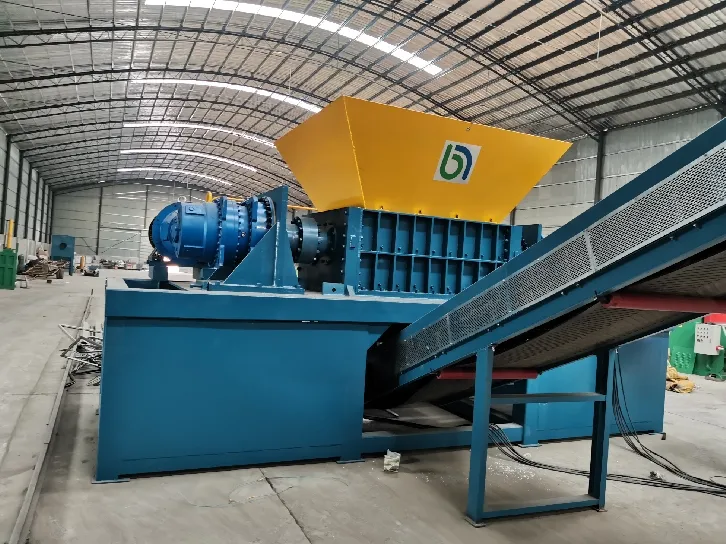
10 月 . 10, 2024 10:46 Back to list
The Role of Eddy Current Recycling in Modern Waste Management
In recent years, the urgent need for sustainable practices has illuminated various methods of waste management and resource recovery. One such innovative technique is eddy current recycling, which is effectively used to separate and recover non-ferrous metals from waste streams. This technology not only conserves valuable resources but also minimizes environmental impacts associated with mining and refining new metals.
Understanding Eddy Currents
Eddy currents are loops of electrical current that are induced in conductors when exposed to a changing magnetic field. When a metal object is placed in close proximity to an alternating magnetic field generated by an eddy current separator, the magnetic field induces eddy currents in the metal. These currents generate their own magnetic fields, causing the metals to oppose the original magnetic field and resulting in their movement. This property is harnessed to separate non-ferrous metals such as aluminum, copper, and zinc from other materials, including plastics and ferrous metals.
The Process of Eddy Current Recycling
The process of eddy current recycling involves several stages, beginning with the initial collection of mixed waste materials. After the materials are sorted and processed, they are sent through a shredder that reduces their size, facilitating the subsequent separation processes. The shredded material is then fed into an eddy current separator, which typically consists of a rotor, an eccentric conveyor, and a magnetic drum.
As the material moves over the rotor, non-ferrous metals are propelled away from the waste stream by the induced eddy currents. This separation is highly efficient, often achieving recovery rates of over 90% for non-ferrous metals. Consequently, the captured metals can be reintroduced into the market, reducing the need for newly mined materials.
Benefits of Eddy Current Recycling

Eddy current recycling offers numerous advantages. Firstly, it contributes to resource conservation by recovering valuable metals that can be reused in manufacturing. For instance, recycling aluminum saves up to 95% of the energy required to produce new aluminum from bauxite ore. Given the soaring demand for metals in industries ranging from electronics to automotive, this recovery process becomes increasingly vital.
Secondly, the adoption of eddy current technology can significantly decrease the environmental footprint of metal production. Traditional mining operations are often associated with deforestation, habitat destruction, and significant greenhouse gas emissions. By recovering metals from waste, eddy current recycling lessens the reliance on these environmentally detrimental practices.
Moreover, this recycling technology fosters a circular economy model where materials are kept in use for as long as possible. By recycling and repurposing metals, industries can reduce their dependence on virgin resources and mitigate the environmental consequences of production.
Challenges and Innovations
Despite its many advantages, there are challenges associated with eddy current recycling. The initial investment in technology and equipment can be substantial, posing a barrier for smaller recycling facilities. Additionally, the efficiency of the process can be impacted by the presence of contaminants and the physical composition of the feed material. Thus, ongoing research and technological advancements are essential for optimizing the efficiency and effectiveness of eddy current systems.
Innovations such as sensor-based sorting technologies and improved rotor designs are being developed to enhance the eddy current recycling process. These advancements strive to increase the accuracy of material separation and expand the range of recoverable materials.
Conclusion
Eddy current recycling stands as a pivotal method in the pursuit of a sustainable future. By efficiently recovering non-ferrous metals from waste streams, this technology not only contributes to resource conservation but also helps in reducing environmental impacts. As we continue to face challenges related to waste management and resource depletion, the significance of such innovative recycling technologies will undoubtedly grow. Investing in and promoting eddy current recycling can play a crucial role in steering industries towards a more sustainable and responsible future, ultimately benefiting both the economy and the environment.
Latest news
Unveiling the Power of Eddy Current Separator
NewsSep.25,2024
Transform Your Home Recyclin:home metal shredder
NewsSep.25,2024
The Future of Waste Management with Recycling Line Picker
NewsSep.25,2024
The Benefits of a Metal Recycling Plant
NewsSep.25,2024
Revolutionize Material Separation with Onwang Technology
NewsSep.25,2024
Innovative Waste Management: Unveiling the MSW Sorting Plant
NewsSep.25,2024